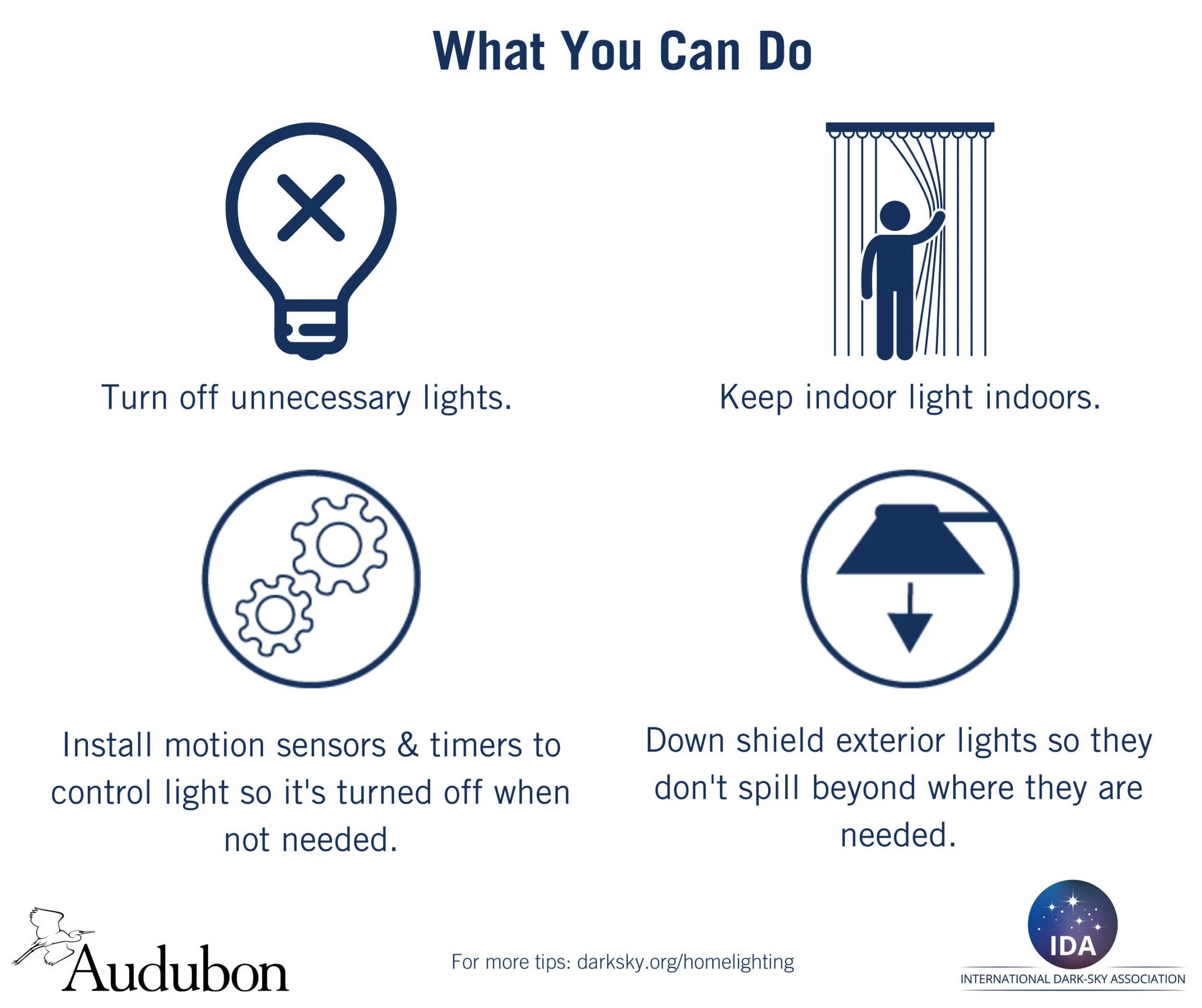Providing Safe Passage for Night-migrating Birds
by Dee Renee Ericks
How do birds know when it is time to migrate? The trigger “to go” lies in the changes of seasonal light levels.
As spring days get longer, a bird’s light receptors in their eyes, brain and spinal cord detect changes in natural light which signals them to prepare for a long flight. These photoreceptors send signals that trigger a cascade of hormonal adjustments to a bird’s endocrine system with messages to boost fat storage and prepare for the energy-demanding adventure of migration.
Every spring and fall, billions of birds migrate through the US, mostly under the cover of darkness. Night-time travel offers more stable air and safety from predators as birds utilize their abilities to navigate by the stars.
This mass movement of birds struggles with a dramatically increasing threat: light pollution! Human-made artificial light can powerfully alter a bird’s natural behavior by confusing the cues of dawn and dusk. It can interfere with their circadian rhythms, breeding and migration cycles.
Lights can disrupt natural migration patterns, attracting birds away from their intended routes. Birds that migrate or hunt at night depend heavily on visual reference to the sky to maintain orientation.
Many migratory birds are phototaxic, which means they’re drawn to light. Interior or exterior artificial light can lure birds into lit areas, causing birds to become disoriented. Birds can waste energy circling skyward-facing lights, potentially becoming exhausted, colliding with buildings and windows. They then become vulnerable to predation. This disruption has tragic consequences with estimates suggesting that collisions related to artificial lighting contribute to the deaths of around 1 billion birds annually in the United States.
Turning off lights dramatically reduces hazards to birds allowing them to safely proceed with their migratory journeys. Further, Lights-Out saves energy and money which makes environmental and fiscal sense.
What you can do to help:
Turn off all unnecessary lights overnight, especially during migration seasons: mid-March through early June, and late August through mid-November, from 11pm until 6AM.
Lighting Guidelines:
Prioritize Essential Lighting: Focus on maintaining essential lighting for safety and security, such as motion-activated lights, strategically placed security lights, and emergency lighting. Choose a warm-color LED light.
Use Motion Sensors: Install motion sensors on outdoor lights to activate them only when needed, reducing the amount of time lights are on
Minimize Light Spill: Ensure that all exterior lighting is properly shielded and aimed down to minimize light spill and glare, reducing light pollution without compromising safety. Direct light only where it is needed. Close your blinds or curtains.
Reduce Unnecessary Lighting: Turn off decorative lights and other non-essential lighting. Make sure you’re not over-lighting. Light should be no brighter than necessary.
Together we can do our part to help birds navigate migration safely, and help raise awareness about the growing impact that light pollution has on the world around us.
For more information visit:
https://birdcast.info/science-to-action/lights-out/
https://www.audubon.org/our-work/cities-and-towns/lights-out


